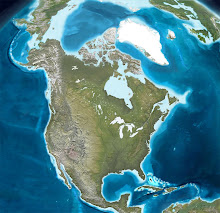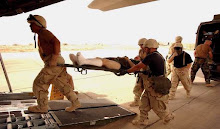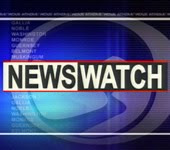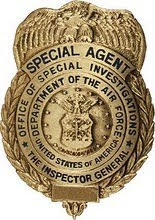By Steve Hammons
An independent film from the mid-1960s has been lovingly resurrected, restored and now, rediscovered by a new wave of fans. “Spring Night Summer Night” has been making the rounds at prestigious film festivals in recent years and is now available via a dual DVD/Blu-ray package from Flicker Alley.
Filming began in 1965, directed by Joseph L. “Joe” Anderson, then the head of a tiny film program at Ohio University, Athens, in the Appalachian southeast corner of the state. Ohio U. students were writers, cast and crew, and the film was completed in 1966 for $29,000.
The film tells a story of life in a small Appalachian town, and the transition into adulthood of the two main characters, Jessie (Jessica) and Carl. It was filmed in and around Athens, Athens County and neighboring villages, towns and counties.
“Spring Night Summer Night,” released in 1967, caught the eye of prominent filmmakers at the time. It premiered at Italy’s Pesaro Film Festival in 1967 was slated for viewing at the 1968 New York Film Festival.
However, it was bumped from the festival and replaced by the showing of John Cassavetes’ “Faces.” “Spring Night Summer Night” was finally shown at the festival in 2018.
BETTER LATE THAN NEVER
And on Jan. 10, 2020, “Spring Night Summer Night” was shown at UCLA’s Billy Wilder Theater, billed as the “West Coast Digital Restoration Premiere!” Film restorationists Peter Conheim and Ross Lipman, who were key in the film's rebirth, were present for the event.
The UCLA announcement of the showing noted, “Director J.L. Anderson’s remarkable first feature, Spring Night Summer Night has been claiming the attention of a growing number of critics as it has gradually emerged from a decades-long obscurity following screenings, in recent years, at the Museum of Modern Art in New York, UCLA and the Rural Route Film Festival. This stunning new 4K restoration promises to bring the film an even wider audience.”
Now recognized as an outstanding independent film, the new DVD release includes extras such as alternate and behind-the scenes footage, interviews with the film’s participants, commentary by film experts and a “Bluegrass Trilogy” of three shorts filmed at Ohio University and set to Bluegrass tunes.
An Oct. 15, 2018, article about the film on the entertainment website IndieWire was titled, “‘Spring Night, Summer Night’: One Film’s Bizarre 50-Year Journey to Its Long-Delayed New York Film Festival Premiere.”
The IndieWire article explained that the film’s long road to the 2018 New York Film Festival screening involved many people over the years. These included Conheim, Lipman, and director Nicolas Winding Refn and his cinema preservation activities.
Cinematographer Ed Lachman was part of the team that filmed “Spring Night Summer Night” and a student of director Anderson. Lachman told IndieWire, “The film department only existed because of the football department, who owned a film processing machine and 16mm cameras we could use.”
Lachman explained, “It was this very open classroom where Joe exposed us to all these films we had never seen before – you really could feel that influence of European films of the time watching that film tonight. Joe made his films with his students.”
“He thought we should be out filming in areas around Athens, not unlike the Italians after the war. I worked on his next film after this one, ‘America First.’ It was one of the most exceptional experiences I had and really formulated my interest and approach to filmmaking,” Lachman said.
STORY IS RELEVANT NOW
In another article noting the film’s inclusion in the 2018 New York Film Festival, the local newspaper The Athens News featured a Nov. 20, 2018, piece under the headline, “A missed masterpiece – Film world rediscovers long-neglected feature shot in 1965 in rural Athens County and surrounding area.”
“The cast were first-time movie actors, with locals as bit players,” according to The Athens News. It recalled, “An article that appeared in the Ohio University student newspaper, The Post, on Nov. 29, 1966, reports on photography for ‘Spring Night Summer Night’ wrapping up. It quotes [script co-writer Franklin] Miller as noting that ‘of the 57 people connected with the film, everyone is, or was, a student at OU’.”
The Athens News quoted Miller as saying, “As we were writing, a two-year process, we drove all through the remote coal-mining hills of southeastern Ohio, scouting locations and, equally important, listening to speech patterns.”
The article also reported that UCLA film restorationist Lipman reviewed the film in 2012 and called it “a compelling and beautiful drama.” Lipman said UCLA had acquired the original negative and only remaining print. However, at the time, funding for restoration was not available.
But before long, due to widespread appreciation of the film, support was forthcoming to professionally restore it.
“Spring Night Summer Night” might also be relevant in current national discussions about society, culture, history, economic opportunity and human behavior.
The Athens News piece points out that, “Watching it may bring to mind the debate now raging around J.D. Vance’s memoir ‘Hillbilly Elegy,’ which decries Appalachia’s supposedly dysfunctional culture, and Elizabeth Catte’s stinging rejoinder, ‘What You Are Getting Wrong About Appalachia,’ which reminds us that the region’s downtrodden status is more inflicted from without than bred from within – and has often sparked homegrown resistance.”
- - -
For more information:
“Spring
Night, Summer Night Blu-ray Review + Unboxing,”
Flicker Alley, on YouTube
“Spring
Night Summer Night (1967) – Trailer,”
Flicker Alley, on YouTube
- - -
(Related articles "Navy Research Project on Intuition," "Human perception key in hard power, soft power, smart power" and “Storytelling affects human biology, beliefs, behavior” are posted on the CultureReady blog, Defense Language and National Security Education Office, Office of the Undersecretary of Defense for Personnel and Readiness, U.S. Department of Defense.)
Thursday, July 23, 2020
Film experts, fans celebrate rediscovery of Appalachian story ‘Spring Night Summer Night’
Wednesday, July 15, 2020
Miami U. of Ohio changed name from ‘Redskins’ to ‘RedHawks’ in 1997
By Steve Hammons
Miami University of Ohio in Oxford, located in southwestern Ohio near the Indiana state line, changed its mascot name from "Redskins" to "RedHawks" in 1997 after the Miami Tribe of Oklahoma made a name-change request of the university.
The university's decision to change the name sparked debate, according Miami University’s Director of Miami Tribe Relations Kara Strass.
In a July 13, 2020, article from ABC9 News in Cincinnati under the headline, “Miami University was decades ahead in dropping Redskins nickname,” Strass was quoted as saying, “I think this was a very controversial decision. I don’t think it was one that was made lightly."
She noted, “There was a lot of alumni pushback to people who saw Redskins as part of their Miami identity, part of their experience of going to school at Miami, and felt like I think something had been taken away from them. It’s been pretty controversial ever since then.”
Miami University was founded in 1809 – not long after many native people, including the Miami, Myaami or Myaamia of southwestern Ohio and Indiana, and the Shawnee of Ohio and Kentucky had been pushed out of the region by force, after much bloodshed and loss of their lands.
MYAAMIA CENTER
Miami U. is in an area that was an interface between the Miami people to the west and northwest, and the Shawnee tribe who lived to the east in central and southern Ohio and Kentucky, south of the Ohio River, or as it reportedly was called then, the “Ohi yo” or “Ohiyo.”
Today, Miami U. is home of the Myaamia Center, begun in 2001 as the Myaamia Project, with wide-ranging activities in partnership with the Miami Tribe of Oklahoma. That tribe is the only U.S. government-recognized Miami tribe, though there is also a Miami tribal group in Indiana.
According to their webpages on the Miami U. website, “The Center focuses on conducting in-depth research to assist the Miami Tribe’s educational initiatives aimed at the preservation of language and culture.”
Additionally, “The Center also emphasizes exposing undergraduate and graduate students at Miami University to tribal efforts in language and cultural revitalization.”
Also on the Miami U. website, "The Myaamia Center is directly supported by both the Tribe and the University. Anyone committed to helping perpetuate Miami language and culture for future generations is welcome to participate."
The Myaamia Center describes its mission: “The Center, a Miami Tribe of Oklahoma initiative located within an academic setting, serves the needs of the Myaamia people, Miami University, and partner communities through research, education, and outreach that promote Myaamia language, culture, knowledge, and values.”
Relationships that have been established between Miami U. and the Miami Tribe of Oklahoma. “Over the years, a thriving and mutually enriching relationship has developed between the Miami Tribe of Oklahoma and Miami University.”
“Each activity, project, class, and visit is one piece of a much broader, continuously developing relationship,” the Myaamia Center webpages explain.
PAST, PRESENT, FUTURE
The center is involved in research and conferences. “The Myaamia Center's offices explore research on a breadth of topics, from language and education to cultural ecology.”
“We present our research regularly at events such as the Myaamiaki Conference. We also make our research available to members of the Miami Tribe community and the public, in many cases as free downloads.”
Also from the center’s webpages:
- 125 Myaamia students have enrolled at Miami University since 1996.
- 89% graduation rate for Myaamia students at Miami University as of 2017.
- In 2022, the Miami Tribe of Oklahoma and Miami University will celebrate 50 years of relationship building.
According to Cincinnati’s ABC9 News article, “The Miami Tribe formally asked the university to change its nickname and mascot in 1996. A year later, it did – to RedHawks.”
Miami U.’s Strass is quoted as saying, “That is a first step, and that there is so much more work to be done, before people truly understand what it means to be a native person, to honor native communities.”
The article explained, “At Miami, Strass says without the name change a lot of what’s happening now, like the creation of the Myaamia Center and a program that’s bringing 30 tribal students to attend school there this fall, wouldn’t have been possible.”
- - -
For more information, visit their website: Miami
University’s Myaamia Center
(Related articles "Navy Research Project on Intuition," "Human perception key in hard power, soft power, smart power" and “Storytelling affects human biology, beliefs, behavior” are posted on the CultureReady blog, Defense Language and National Security Education Office, Office of the Undersecretary of Defense for Personnel and Readiness, U.S. Department of Defense.)



































































































































































































